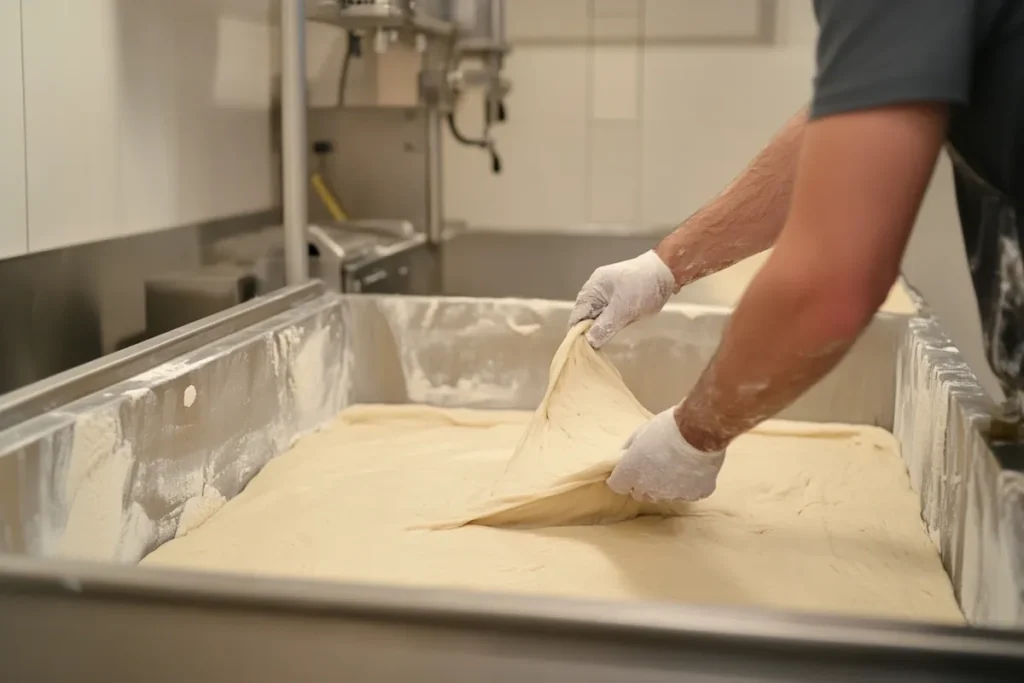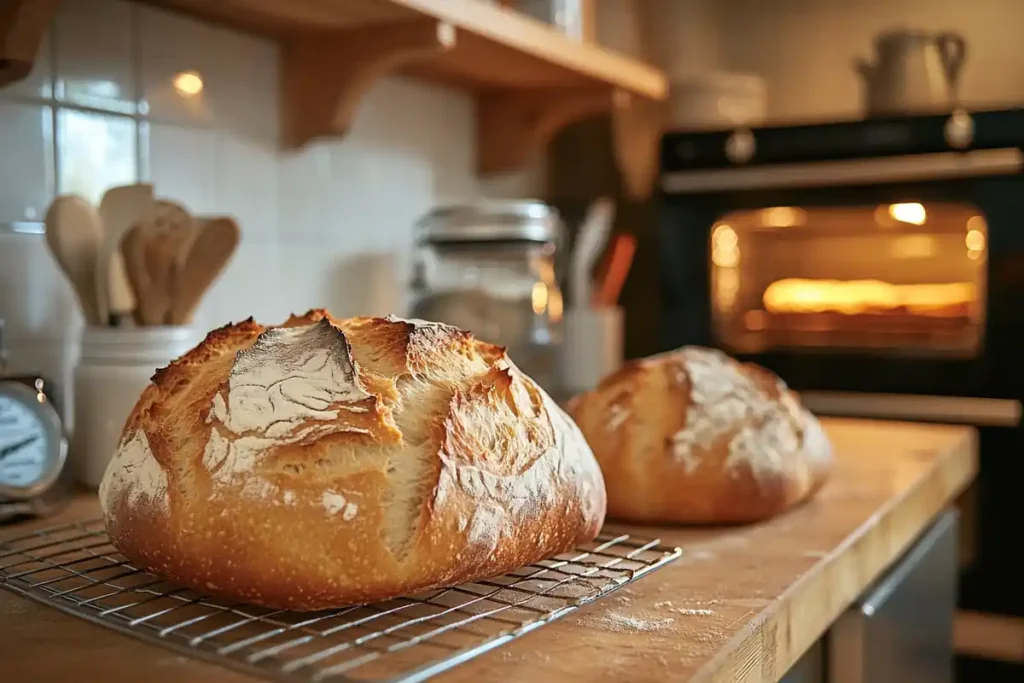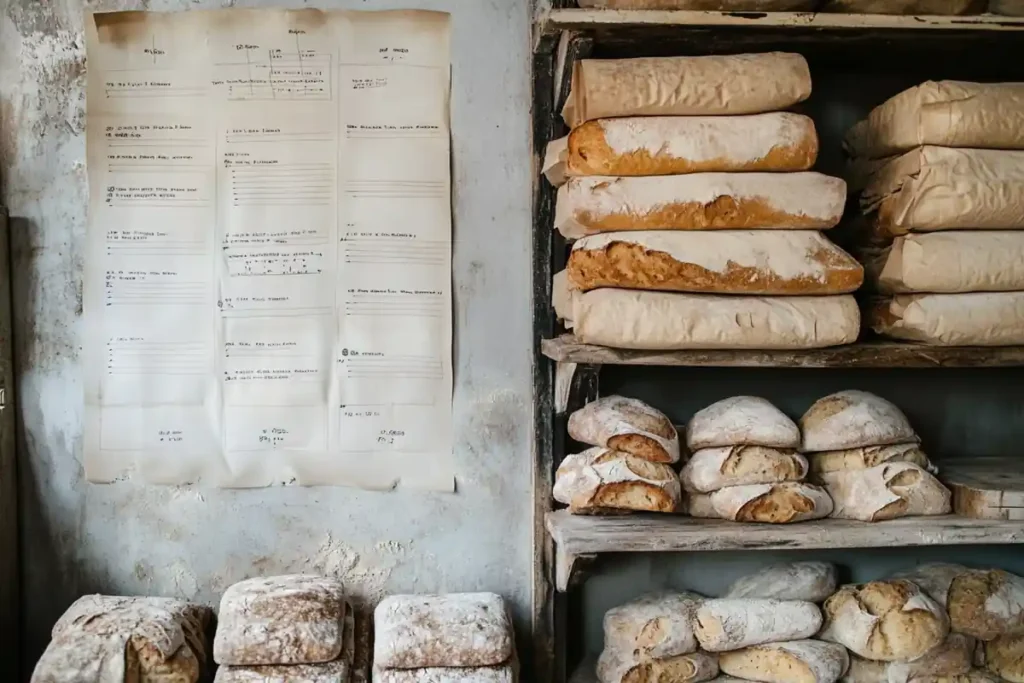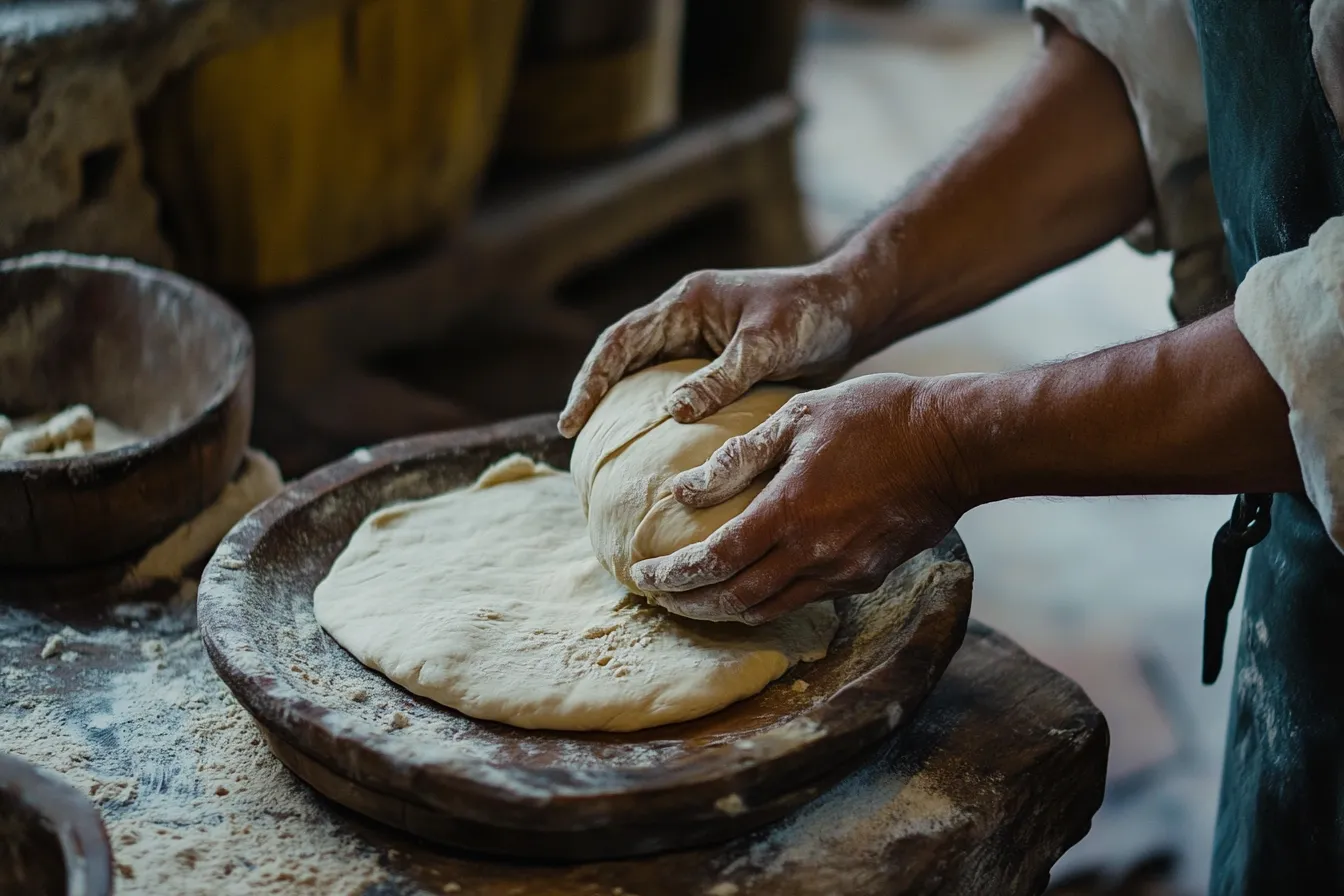This article explores what is the longest bread to make, looking at various factors that affect baking time. It covers different types of bread and the process involved. We also address common questions about making bread.
Understanding What is the Longest Bread to Make
The question of what is the longest bread to make depends on several factors. Chiefly, the fermentation time and baking time greatly influence the total duration. Basically, some breads require several days of preparation. Therefore, different recipes impact the time commitment required.
Key Factors Affecting Baking Time
Several key factors contribute to the length of time required to make bread. These factors include: the type of yeast used, the amount of time the dough ferments, and the complexity of the recipe. Additionally, the baking time itself can vary. Moreover, the ingredients used impact the duration.
Yeast Type and Fermentation
The type of yeast used greatly affects how long it takes to make bread. Specifically, wild yeast, as used in sourdough, requires much longer fermentation. Comparatively, commercial yeast works more quickly. Consequently, the choice of yeast plays a key role.
To learn more about hard-textured loaves, check out What Is Hard Bread?.
Types of Bread and Their Baking Durations
Different types of bread require different amounts of time to prepare. Indeed, exploring these variations gives us more insight into what is the longest bread to make. Furthermore, the length of the baking process varies based on the recipe itself.
Sourdough Bread’s Extended Process
Sourdough bread is often considered the type that takes the longest time to make. For instance, the starter, which uses wild yeast, needs several days to mature. Moreover, the dough itself requires multiple fermentation periods. Therefore, sourdough is often a multi-day process.
Therefore, sourdough is often a multi-day process. The time commitment required for these breads is comparable to other challenging recipes; see What Are the Hardest Breads to Make? for more insights.
Elaborate Multi-Day Breads
Some breads involve multiple stages of mixing and resting. Specifically, these processes greatly extend the total time. Indeed, the complexity of a particular recipe influences the overall duration. Thus, some breads require a large time commitment.
Faster Breads and Their Times
Some breads are designed to be made quickly. For example, some flatbreads require very little time. Comparatively, these breads use commercial yeast and have short fermentation periods. Therefore, the recipe determines how fast a bread can be made.
Therefore, different recipes impact the time commitment required. To explore the terminology behind these breads, see What Is Hard Bread Called?.
The Fermentation Stage’s Impact on Baking Time

The fermentation stage is very important when it comes to what is the longest bread to make. Specifically, longer fermentation contributes to better flavor and texture. Additionally, this process takes up a significant portion of the time needed.
Bulk Fermentation and Its Length
Bulk fermentation, the first rise of the dough, can take hours or even days. Indeed, the longer the dough ferments, the better the results. Consequently, the desired flavor and texture are usually worth the time. Thus, this step contributes greatly to the total baking duration.
Proofing’s Effect on Time
Proofing, the final rise after shaping, also adds to the time needed. Specifically, this process allows the dough to achieve its final shape. Moreover, the time needed varies based on temperature. Therefore, proper proofing is an important step in the bread-making process.
Cold Fermentation’s Timeframe
Cold fermentation, done in the refrigerator, can greatly lengthen the process. For example, some doughs are fermented for a couple of days. Accordingly, this slows down the yeast activity and results in enhanced flavor. Thus, while increasing the total time, it also has its benefits.
Baking Time and Its Contribution

Baking time itself adds to what is the longest bread to make. Specifically, larger loaves often take longer to bake. Moreover, the desired crust and crumb texture play a role. Indeed, baking is the final step in the bread-making journey.
Oven Temperature and Baking Time
The temperature of the oven influences how long the bread will take to bake. For instance, higher temperatures often result in shorter baking times. Conversely, lower temperatures require longer baking durations. Therefore, correct oven temperature is crucial for the baking time.
Loaf Size and Baking Duration
Larger loaves, naturally, take longer to bake. Specifically, the center of the loaf needs to reach a safe temperature. Consequently, the size of the bread directly affects baking duration. Thus, loaf size is another factor to consider.
The Desired Texture
The desired crust and crumb of the bread can also impact baking time. For example, a crisp, deeply browned crust requires more time in the oven. Indeed, the baking time is directly influenced by the desired outcome. Thus, achieving the correct texture is another part of baking.
Moreover, the ingredients used impact the duration. For instance, ingredients like chocolate may play an unexpected role—discover more in Does Chocolate Affect Yeast?.
Ingredients and Their Role in Baking Time
The ingredients used in bread recipes also impact what is the longest bread to make. Specifically, some ingredients can lengthen the fermentation time. Moreover, the amount of certain ingredients can change the baking time needed. Indeed, the right ingredients create the best bread.
Flour Choice and Its Impact
The type of flour used affects how long the dough takes to ferment. For instance, whole grain flours absorb more water. Consequently, this can result in different fermentation requirements. Thus, the flour choice can change fermentation time.
Hydration Levels and Duration
The amount of water in the dough impacts the time needed for fermentation. Specifically, higher hydration doughs often require longer fermentation periods. Therefore, the water level impacts the overall time needed to bake the bread. Accordingly, a very wet dough needs more time.
Salt and Yeast Activity
Salt influences yeast activity and fermentation time. Specifically, the right amount of salt controls the yeast. Therefore, salt is very important for regulating fermentation. Thus, its role in the recipe helps control the overall time.
Tools and Techniques for Longer Breads
Certain tools and techniques can also add to the overall time needed to bake the bread. Specifically, these methods often enhance the result but might require more steps. Furthermore, the best results are worth the extra time.
Autolyse and Its Time
Autolyse, which involves mixing flour and water and then letting it rest, adds time to the recipe. However, it helps to improve the dough’s texture. Consequently, this step contributes to a better end result. Thus, autolyse impacts the total time.
Stretch and Folds Technique
Stretch and folds, used during fermentation, add time. However, they improve the dough’s structure. Indeed, this technique helps develop the gluten and results in a better bread. Therefore, they add to the overall bread-making duration.
Shaping and Final Proof
The shaping and final proofing of the dough also add time to what is the longest bread to make. Specifically, these steps ensure the bread rises to the proper shape. Thus, careful shaping and proofing take time. Accordingly, these steps are important for the bread’s appearance.
What Is the Longest Bread to Make in Different Cultures
Different cultures have their own versions of breads that take a long time to prepare. Specifically, these recipes often reflect traditional baking methods. Moreover, these cultural variations highlight different approaches to the process.
European Breads
European cultures have many breads that require extended times. For example, sourdough and some rye breads require long fermentation. Indeed, these traditional recipes often call for specific methods. Therefore, these breads can require several days to make.
Global Long-Duration Breads
Many regions across the globe have slow-rise breads. For example, some cultures ferment their doughs for days at a time. Consequently, these global recipes showcase various approaches to the bread-making process. Thus, they emphasize the diversity of slow baking methods.
Planning for Longer Bread Baking

Planning ahead is important for longer bread recipes. Specifically, the preparation timeline requires a lot of forethought. Additionally, making the most of your time is key. Indeed, preparing the starter or the preferment must be scheduled.
Scheduling the Fermentation Process
The fermentation process often requires careful planning. For example, scheduling long fermentation times around your day is important. Therefore, good time management is very important. Thus, it is best to map the steps beforehand.
Balancing Baking with Other Activities
Balancing baking long breads with your daily activities requires thought. Specifically, make sure to allocate enough time for each stage. Therefore, planning is essential to successful baking. Thus, good time management is key to long bread making.
What Is the Longest Bread to Make and Its Value
Despite the long process, making longer breads can be very rewarding. Specifically, they often have unique flavors and textures. Moreover, the extended preparation can be a relaxing process. Indeed, the satisfaction of making this type of bread is very high.
The Flavor Benefits
Long fermentation develops unique flavors in the bread. For example, sourdough has a tangy flavor that comes from slow fermentation. Accordingly, the flavor is worth the effort. Thus, long bread offers great flavor.
Textural Benefits
The long process also results in an enhanced texture. Specifically, the crumb becomes more airy and open. Indeed, the slow fermentation gives it an incredible texture. Therefore, the final product is worth the effort. Thus, long preparation often produces great results.
Global Slow Bread Traditions
Beyond Europe, numerous cultures boast their own unique traditions of crafting breads that demand extensive preparation. In parts of Africa, for instance, certain types of flatbreads and fermented loaves are made using local grains and techniques passed down through generations.
These may involve natural fermentation processes that can take several days, resulting in unique flavor profiles and textures that reflect their regional origins. Similarly, in some Asian cultures, specific types of steamed or baked breads are prepared with meticulous care, often using rice flours or other native ingredients, and their slow cooking processes contribute to their very distinctive characteristics.
These variations emphasize the diverse ways different cultures approach the art of baking, each developing methods that fit their local environments and resources. Indeed, these regional practices highlight that what is the longest bread to make can mean very different things across the world, depending on the specific techniques and cultural preferences.
Specifically, these slower bread-making traditions often become community events. The time and effort invested in these recipes enhance not just the bread but also the communal connections and sense of heritage. Therefore, these cultural bread making practices are as much about the experience as the final product. Thus, when exploring the question what is the longest bread to make, one should also consider the deep traditions associated with each.
Frequently Asked Questions (FAQs)
What is the longest bread to bake?
Sourdough is often considered what is the longest bread to bake, due to its long fermentation times and overall process, which can take several days.
What bread stays the longest?
Hardtack, a type of hard bread, is known for staying fresh the longest, because of its low moisture content, making it a very shelf-stable option.
What is a long loaf of bread called?
It is often called a baguette. This name reflects its specific shape. Additionally, it’s a very popular type of bread.
What type of bread has been around the longest?
Sourdough is among the types of it that have been around the longest, as the use of wild yeast for bread-making has very old origins.
Conclusion
In conclusion, what is the longest bread to make is typically sourdough. However, many factors contribute to the overall duration. Additionally, different types of it have unique time requirements. Furthermore, the preparation process often involves multiple steps. Therefore, the time spent is an essential part of the bread-making journey. Thus, knowing the time involved can enhance your enjoyment of baking.
Looking for more? Check out our other links for even greater insights and inspiration!

